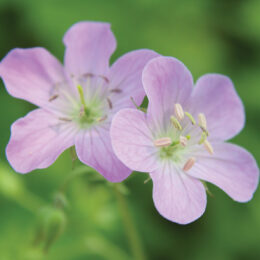
When I worked at a large independent garden center in Indianapolis, customers sometimes came in this time of year wanting to buy spring bulbs to plant. Staffers would have to tell them that the spring bulbs they saw blooming now were planted in fall.
Not all is lost, however. Fortunately, garden centers and home improvement stores usually have tulips, daffodils, hyacinths, and other spring bulbs that have been forced into bloom in pots for the season. Think of these as annuals, enjoying them for the season and then tossing them.
Forced bulbs have been subjected to cold and light requirements that tease them into blooming at just the right time. This process usually occurs at wholesalers, who then ship the plants to retailers.
These are perfect for potting up in containers or popping them in the ground (if the soil is not frozen). Transplanting the spring bulbs into containers is a great way for apartment and condo dwellers to bring a bit of the season to a balcony or patio.
Add pansies, violas, or ranunculus to pots, or push the seasonal envelope with lettuce, kale, chard, or other spring edibles. To mimic a garden, plant individual pots with the same plant, such as one for tulips and one for daffodils. Group these on a deck, patio, or entryway for a spring garden.
When buying forced bulbs, look for those with tight flowers. They should last the longest. Although you can put the bulbs outside, you can also use them as tabletop decorations indoors.
You can plant the forced bulbs in the ground with the hope they will bloom next spring, but there are no guarantees. That’s because forced bulbs spend a lot of their energy in the process.
If you want to transfer them to the ground, try these steps:
- Allow the leaves to turn yellow or brown and fall flat. This is called ripening, and it allows nutrients to flow through the leaves to the underground bulb for next year’s flowers. Remove ripened leaves.
- Consider planting the forced bulbs among spring-blooming perennials or shrubs. Even if the bulbs fail, you will still have seasonal beauty.
- Dig a hole. The planting depth should be about three times deeper than the bulb’s height. If the bulb is 2 inches tall, plant it 6 inches deep.
- Make sure to water well.
If they sprout and bloom next spring, go ahead and claim your green thumb.
Jo Ellen Meyers Sharp blogs at hoosiergardener.com, where you can sign up for her free, award-winning monthly newsletters.



